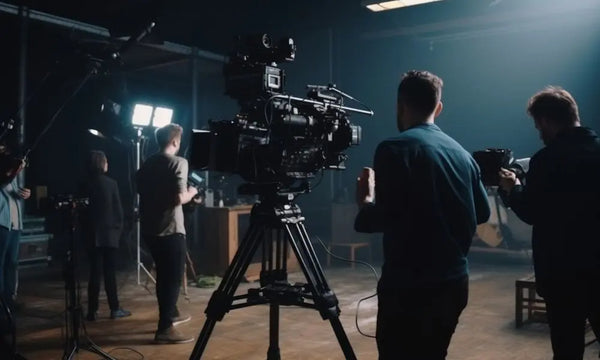
The Importance of Lighting in Film Production
Lighting holds immense power in shaping a film’s visual narrative, though it often goes unappreciated. The right lighting breathes life into scenes, enhances the intended mood, and reveals character traits and narrative themes. In addition, it plays an indispensable role in establishing time and location.
Let’s illuminate why lighting is so important to film production and examine how it helps transform mere camera shots into cinematic art.
Establishes Time and Place
The quality of the light you use for your scenes can indicate different times of day, like the warm glow of a sunrise or the harsh light of midday. Differences in lighting can also help distinguish between geographical locations or climates. For example, urban settings are often associated with cool, blue-toned lights, while rural landscapes often have a warm golden glow.
Sets the Mood
Your lighting choices will deeply impact the mood and atmosphere of your film. Adjust the intensity, direction, and color of your lighting to evoke specific emotional responses.
Soft yet bright lighting dispersed with a scrim diffuser can suggest the happiness of a lighthearted comedy. Meanwhile, low-key lighting with stark shadows can create tension or even fear in your audience.
Enhances Visual Aesthetics
Lighting plays a pivotal role in enhancing the visual mood and aesthetic of your film. By skillfully manipulating light and shadows, you can create striking images that captivate viewers. Light can highlight certain elements within a scene, draw attention away from others, and even transform your shot’s overall look and feel.
Reveals Character Traits and Themes
A character predominantly lit by harsh, high-contrast lighting may come across as morally ambiguous, complex, or tortured. On the other hand, if you light your character with soft, warm tones, audiences will be calmed and cheered by their presence.
Consider using recurrent lighting motifs to highlight symbolism or consistent themes in your narrative. Your lighting can become a conduit for conveying deeper layers of meaning in the story.
Famous Use in Film
Gordon Willis, the cinematographer behind The Godfather (1972), lit Marlon Brando with harsh overhead lighting that threw shadows over his eyes. Obscuring the eyes of Brando’s character, Don Corleone, suggested that nobody could be sure what he was thinking at any given time.
Why is lighting so important in film production? Not only does the appropriate lighting convey the time and place of your scene, but it underscores symbols and themes throughout your narrative. Experiment with creative lighting techniques to develop your own visual style as a filmmaker.
